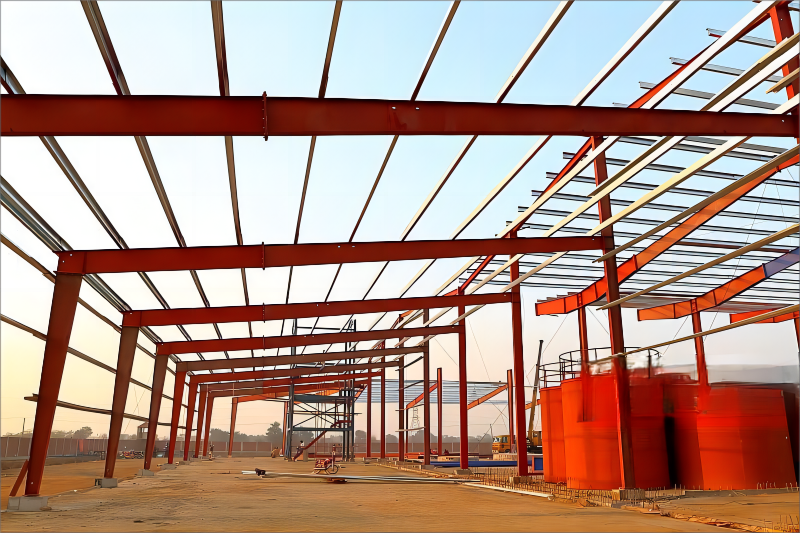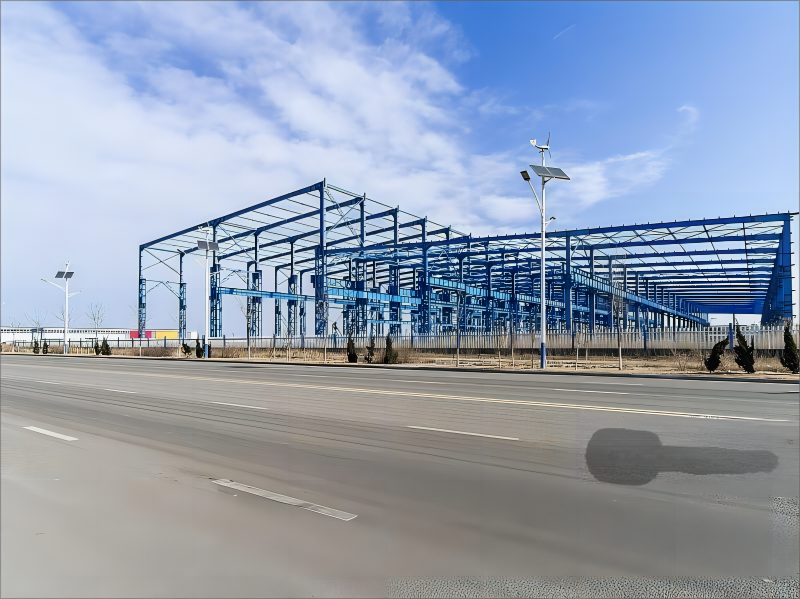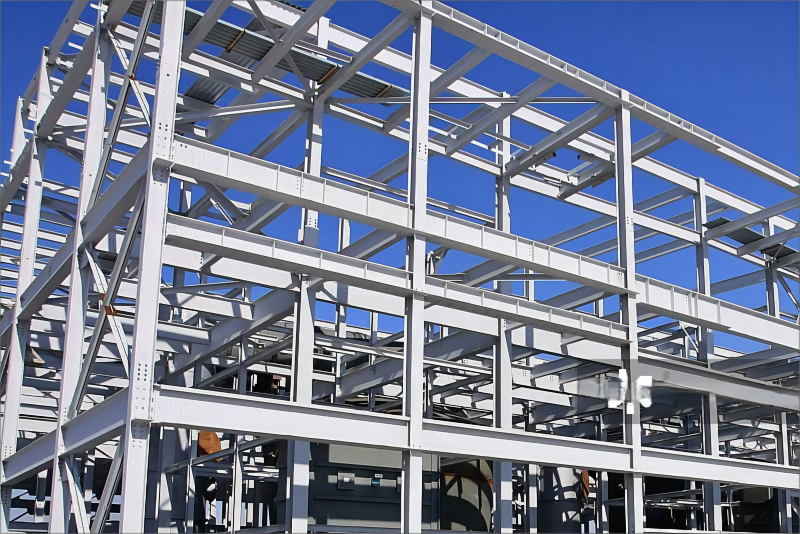- What Is A Portal Steel Structure?
- How Does A Portal Steel Structure Work?
- What Are Functions of A Portal Steel Structure?
- How To Choose Right A Portal Steel Structure?
- Summary
Understanding Portal Steel Structures: A Comprehensive Guide
Portal steel structures have emerged as a fundamental concept in modern construction due to their efficiency, versatility, and strength. This article explores what a portal steel structure is, how it operates, its functions, and tips for selecting the right one for your project.
1.What Is a Portal Steel Structure?
A portal steel structure is a type of framework commonly used in buildings and large-scale constructions. Characterized by its rigid frame, a portal steel structure typically consists of vertical columns and horizontal beams, forming a rectangular or square shape. This design allows for large open spaces without the need for internal support columns, making it ideal for warehouses, factories, and sports facilities.
The primary materials used in constructing a portal steel structure include steel sections, which provide high tensile strength and durability. This structure is particularly popular in industrial applications due to its ability to cover wide spans and accommodate various operational needs.
2.How Does a Portal Steel Structure Work?
The functionality of a portal steel structure is rooted in its engineering principles. The main components, including columns and beams, work together to distribute loads effectively. When forces such as wind, snow, or seismic activity act on the building, the rigid frame of the portal steel structure absorbs and transfers these loads throughout the framework.
The columns are typically anchored to the foundation, providing stability and support. As loads are applied, the beams experience bending and shear forces, which are countered by the rigidity of the frame. This integration of components allows for the creation of large, unobstructed interior spaces, a significant advantage in many industrial and commercial applications.

3.What Are the Functions of a Portal Steel Structure?
Portal steel structures serve various functions, making them a versatile choice for many types of buildings:
3.1 Open Space Utilization: One of the primary functions of a portal steel structure is to provide large, open spaces. This is essential for warehouses, manufacturing plants, and sports complexes where unobstructed areas are necessary for operations.
3.2 Cost-Effectiveness: Due to their efficient design and material usage, portal steel structures are often more cost-effective than traditional building methods. They require less material while still providing strength and stability, leading to lower overall construction costs.
3.3 Rapid Construction: The modular nature of portal steel structures allows for quicker assembly on-site. Prefabricated components can be manufactured off-site and then transported for easy installation, significantly reducing construction time.
3.4 Flexibility and Adaptability: Portal steel structures can be easily modified or expanded to meet changing needs. Whether adding more space or reconfiguring the layout, the adaptability of these structures makes them ideal for dynamic environments.
3.5 Durability and Longevity: Constructed from high-quality steel, portal steel structures exhibit excellent durability and resistance to various environmental factors. This longevity reduces maintenance costs and extends the life of the building.
3.6 Energy Efficiency: With proper insulation and design, portal steel structures can be energy efficient. They can incorporate energy-saving technologies, such as natural lighting and advanced HVAC systems, to reduce operational costs.
4.How to Choose the Right Portal Steel Structure?
Selecting the appropriate portal steel structure involves several key considerations:
4.1. Project Requirements
Begin by defining the specific requirements of your project. Consider the intended use of the building, such as manufacturing, storage, or commercial activities. Understanding the operational needs will guide your design choices.
4.2. Site Conditions
Evaluate the site conditions, including soil type, topography, and environmental factors. These elements can influence the design and foundation requirements of the portal steel structure. Conducting a thorough site assessment is crucial for ensuring stability and safety.
4.3. Design Specifications
Work with architects and engineers to develop design specifications that meet both aesthetic and functional requirements. The design should align with your vision while accommodating the necessary structural elements, such as load-bearing capacities and safety regulations.
4.4. Budget Considerations
Establish a clear budget for your project. While portal steel structures are generally cost-effective, variations in design complexity, materials, and site conditions can influence overall costs. Ensure that your choices align with your financial constraints.
4.5. Building Codes and Regulations
Familiarize yourself with local building codes and regulations that may impact the design and construction of your portal steel structure. Compliance with these regulations is essential for safety and successful project completion.
4.6. Sustainability Goals
If sustainability is a priority, explore eco-friendly materials and energy-efficient design practices. Many portal steel structures can incorporate green technologies, such as solar panels and rainwater harvesting systems, to enhance their environmental performance.
4.7. Manufacturer Selection
Choose a reputable manufacturer with experience in portal steel structures. Evaluate their portfolio and customer reviews to ensure they can deliver high-quality components that meet your specifications.

5.Summary
In summary, portal steel structures are a versatile and efficient choice for modern construction, offering numerous benefits such as open space utilization, cost-effectiveness, and rapid construction. By understanding the fundamental principles of how a portal steel structure works, its various functions, and the factors to consider when selecting one, you can make informed decisions that align with your project goals.
Whether for industrial, commercial, or recreational purposes, the right portal steel structure can provide a robust and adaptable solution that meets your needs for years to come. By considering the design, site conditions, budget, and sustainability goals, you can successfully implement a portal steel structure that stands the test of time.
Contact Zhuohang now to obtain customized one-stop steel frame building construction solutions and jointly create a more resilient urban future!

